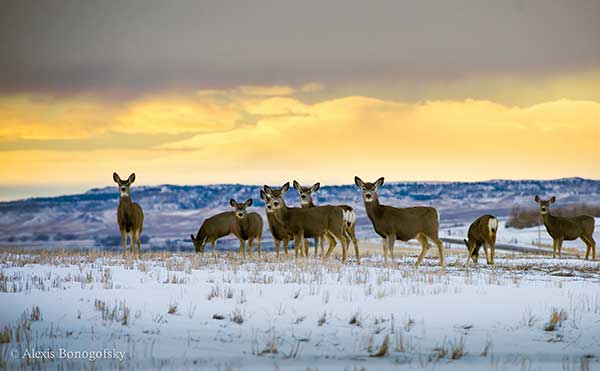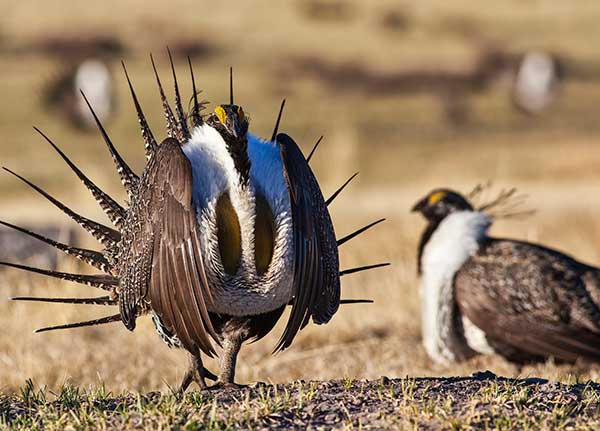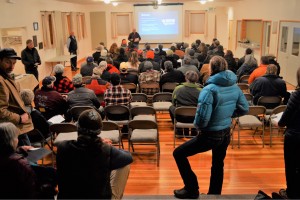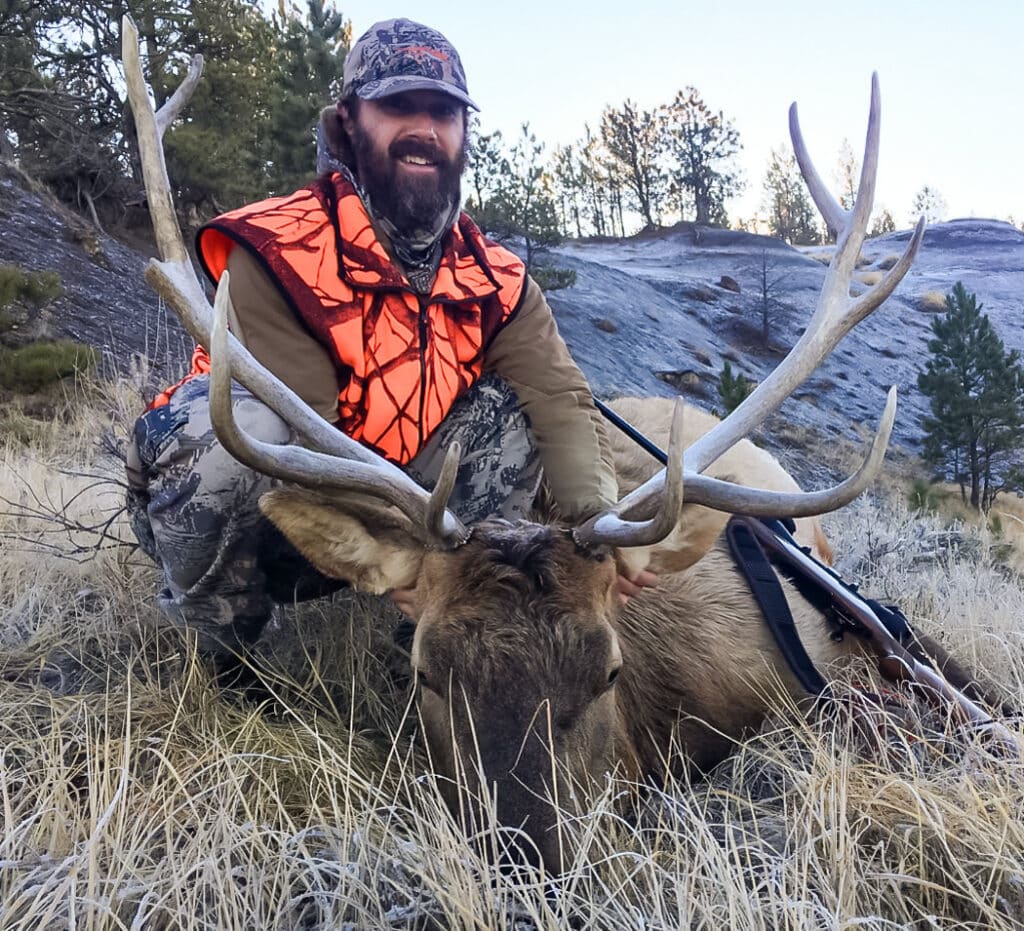
Back in October I took a break from elk hunting to photograph bighorn sheep at the National Bison Range in Moiese. I was surprised how close one ram let me get, and then I noticed something was wrong. Several times he dropped his head to the ground and struggled to lift it back up. The weight of his heavy horns, he long proudly carried, had apparently become too burdensome. He was dying. I returned the next day and found his body.
After posting a photo of the ram on Facebook, and speculating about his death, my friend Stacy Courville, a wildlife biologist with the Confederated Salish and Kootenai Tribe, said the sheep most likely died from pneumonia, which had recently infected the Bison Range. So I talked to Jeff King, the U.S. Fish and Wildlife Service manager who oversees the range. Courville was correct: A bacteria called Mycoplasma ovipheumonia had infected the bighorn populations, causing pneumonia. More than 35 wild sheep had died in just a few months. King and others suspect that the bacteria was transferred to the wild herd from a domestic sheep herd about a mile west of the range.
Once the bacteria infects a herd of wild sheep, it can be devastating, and not much can be done.
“Mycoplasma ovipheumonia has no cell wall, so antibiotics do not work on it,” says Mark Penninger, an Oregon-based wildlife biologist who heads up the bighorn sheep program for the U.S. Forest Service. “It is carried with no ill effects by many domestic sheep and goats, but is deadly to wild sheep. Our wild sheep have not evolved with this pathogen. It can sometimes kill wild sheep by itself, but is often a precursor that compromises the respiratory system’s ability to move things, such as bacteria and viruses, out with mucous. Then the sheep die when their body responds by producing more mucous, which results in pneumonia. It is quite the dilemma when trying to protect and restore bighorn populations.”
When a bighorn sheep population is initially infected, often as many as a third, and sometimes up to 90%, of the herd may die from pneumonia. Most survivors are apparently immune, but their lambs are not and usually die before weaning. In some populations, annual pneumonia outbreaks in lambs continue for decades after the initial infection, which prevents the population from bouncing back. In other populations, lamb survival returns to normal relatively quickly. Why some populations recover and others do not is one of the most important questions scientists are trying to answer. Some researchers hope that wild sheep herds could eventually develop an immunity.
But in the meantime, bighorns are being infected and dying throughout their range.
More than 90 bighorns recently died of pneumonia near Plains, and another 39 died near Gardiner. “We’re losing hundreds of wild sheep to this disease every year and it is decimating herds across the west,” said Kyle Meintzer, director of the Wild Sheep Foundation (WSF) based in Bozeman. “For example, in 2013, 400 wild sheep in California were lost, and that’s 80 per cent of what was the largest herd in the state. Wildlife managers were forced to sacrifice the herd in the Tendoy Mountains in Montana due to recurring pneumonia and low lamb survival. Wildlife managers, with the help of hunters, will remove 100 per cent of the herd and later will repopulate the herd with healthy bighorns.”
Unfortunately, killing wild sheep because of suspicion of exposure is the prudent thing to do in many cases, according to Mark Penninger. “A wandering wild sheep can cover a lot of miles and return to its herd with death in its breath. Killing one sheep could prevent the loss of an entire herd. Capturing and testing is rarely practical due to urgency and terrain.”
Although scientists don’t know exactly how the disease is transmitted, what factors contribute to transmission and whether transmission of other bacteria, even among wild sheep alone, contributes to the bighorn die-offs, mounting evidence suggests that domestic sheep are a major vector. A 2008 study by Colorado Division of Wildlife scientists showed that a single domestic sheep that wandered onto bighorn winter range caused a die-off of more than 86 bighorns from 1997 to 2000.
What can be done? The most viable – yet controversial – proposals involve separating wild and domestic sheep by large distances to prevent contact. “The science is clear that domestic and wild sheep can’t live together,” says Kevin Hurley, Conservation Director for WSF.
In the Salmon River country of Idaho, where 76-percent of the bighorn populations was lost to pneumonia, legal battles ensued between sheep herders, conservationists and the U.S. Forest Service when the Payette National Forest decided to keep domestic sheep off grazing leases within bighorn sheep range. In 2008, a U.S. District Judge ruled in favor of the decision. But leaders of hunter-conservation organizations, and wildlife biologists and mangers with state and federal agencies, would prefer to work with the sheep ranching industry to find viable solutions rather than fight things out in court.
The WSF recently met with members of Congress and federal wildlife agencies on solutions to create safe zones against deadly pneumonia bacteria and viruses that are infecting wild sheep herds in the U.S. “Having a disease-free zone around the new herd is necessary to prevent new infection and assure the success of restoration,” says Kyle Meintzer.
Steve Torbit, executive director of the National Wildlife Federation’s Rocky Mountain Regional Center in Boulder, Colorado, calls for “livestock producers and wildlife folks to roll up their sleeves and work together to find areas suitable for domestic sheep.” Torbit and other bighorn advocates hope they can persuade western sheep ranchers and federal officials to develop a strategy that will allow bighorn sheep populations to expand through conservation and further reintroductions across the West. “I don’t want to start a new range war, because it’s not good for anybody, and it’s certainly not good for wildlife,” he says. He favors a collaborative process that brings ranchers, sportsmen, tribes and conservationists together to protect the range and wildlife but still allows ranchers to thrive – creating safe zones for wild sheep far from domestic sheep, and setting aside other zones for domestic sheep far from bighorn habitat.
As Kevin Hurley puts it: “If you believe in compromise and conservation, both sides have to give up something.”
David Stalling is the MWF Western Field Rep. Reach him at dstalling@mtwf.org.





